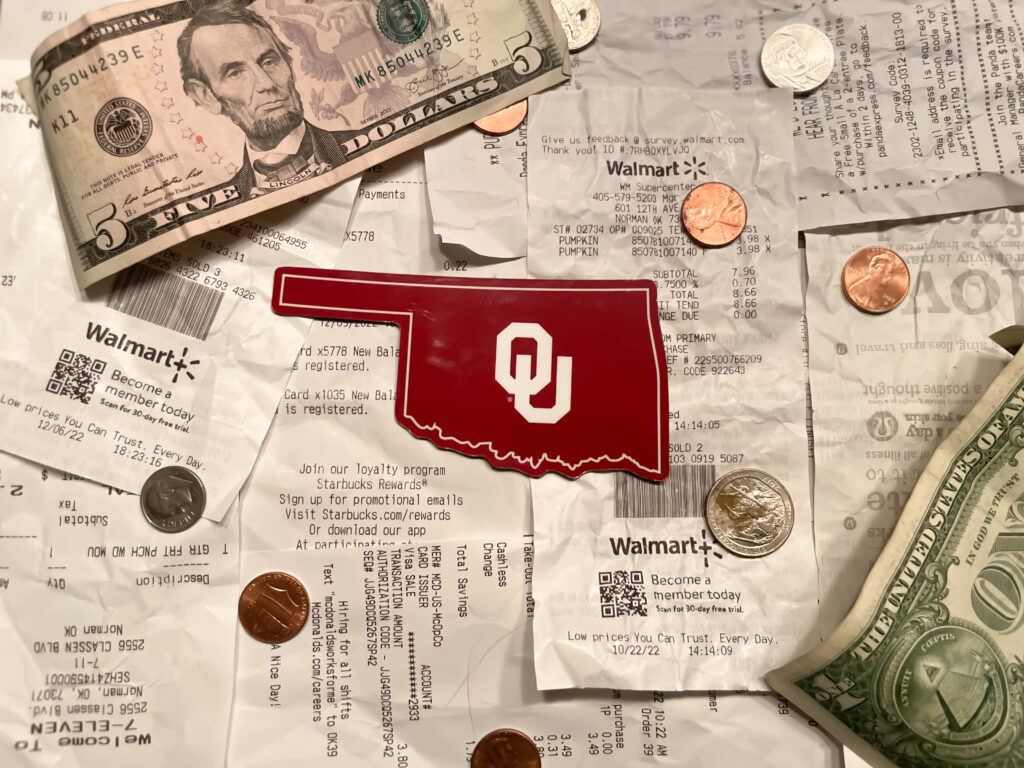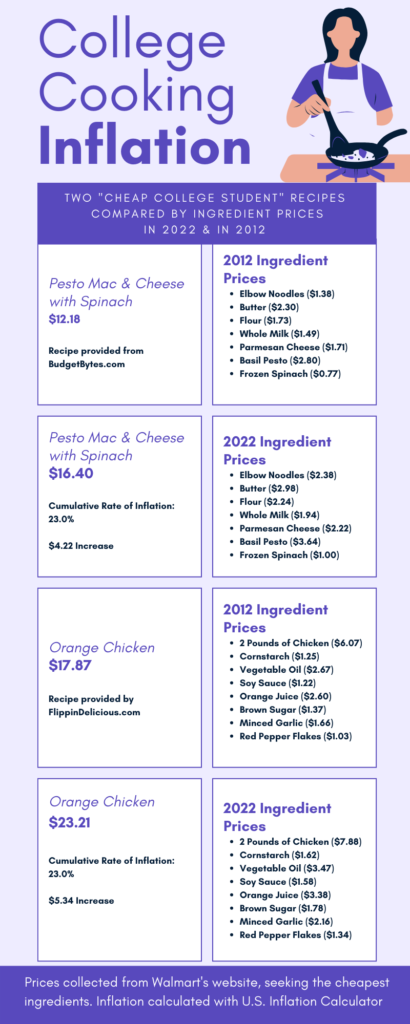In the wake of rising inflation, many OU students are struggling to keep up with food prices

In 2022, shoppers have seen a 9 percent increase in prices, compared to previous years. The American population has had to adapt and bend to inflation and price hikes. While most college students lack the financial flexibility to adapt to rising inflation.
Throughout the year the term “inflation” has been thrown around, in newsrooms, gas pumps and at the dinner table. However, many fail to understand the term at a base level. The University of Oklahoma’s Student Government Chair Demetri Papahronis defines it as, “The increased monetary value assigned to an item. So it’s the gradual increase of that price or dollar value assigned to that item. Just rising due to supply and demand.”
Though inflation has had a nationwide impact, almost all aspects of college students’ living expenses and education are directly affected. This includes tuition, gas, housing and food.
“I would say that you see inflation mainly impacting students because students’ budgets are not expanding, while their costs are expanding. So you’re seeing students have to purchase more or less items because they have less money to work with in the whole, because those items cost more money,” Papahronis said.

With college comes the promise of freedom, though many students are left without any idea how to budget and plan meals. Especially for college sophomores who became reliant on meal plans and points their freshman year, the task of grocery shopping can seem daunting, and the condition of the economy has not helped alleviate any stress.
Sophomore Special Education Major, Brianna Boyett reflected on how the change from meal plans to meal planning in this state of inflation has affected her health and wallet.
“Going from the convenience of a meal plan and being able to just buy food whenever I want to go to the Caf, literally anytime, to planning out meals and grocery shopping is a lot harder. It takes a lot of effort. And it’s a big responsibility…I definitely eat less because it’s more convenient to buy less groceries. It’s cheaper that way. And so eating smaller portion sizes and smaller meals is easier,” Boyett said.
Many students have reported fundamentally changing their eating habits due to the recent inflation.
“I used to be vegan, like for most of high school, and then even a little bit last year. Freshman year and now, It is way too expensive to buy vegan food…I definitely would be interested in trying to go back. I think I would try being vegetarian for a little bit. But probably not anytime soon. Food is just a little too expensive right now,” Sophomore Biology Major Josie Kramer said.
OU students aren’t the only ones noticing the impact of inflation. Organizations such as the OU Food Pantry are now serving almost double the number of students and staff to keep up with the demand.
“Last year, we were averaging like 150 to 180 people per week in the pantry. And now we’ve surpassed 500 per week, but probably average about 450…I think food prices definitely are affecting it. Because I’ve even seen people on staff grab food, just because it’s getting so expensive,” said Bailey Koewing, OU Food Pantry Volunteer.
The food pantry is hoping to dismantle the stigma around students using campus resources. Especially during times of inflation and price increase, the organization hopes all who need help feel welcome to ask.
“A lot of people seem to think that the food pantry is actually only for OU students and staff. And I mean, it’s used by a lot of people every week. I feel like it is moving to the heart of campus, people use it a lot more. And I think the stigma around a food pantry is kind of going down, because it’s only students and staff using it. So it’s not like you’re taking food away from someone who needs it more, because everyone needs it,” said Koewing.
While some Economists predict the period of high inflation will slow down sometime next year, for now the food pantry isn’t slowing down, and neither is the demand. More information on the University of Oklahoma Food Pantry is available on the organization’s website.
Attached below is a visual aid highlighting OU students’ experiences when facing rising food prices, and how campus resources are striving to support students. The video includes interview clips, footage from the OU Food Pantry, and clips of students creating budget-friendly meals. Interview clips feature Demetri Papahronis, Brianna Boyett, Josie Kramer, and Bailey Koewing.